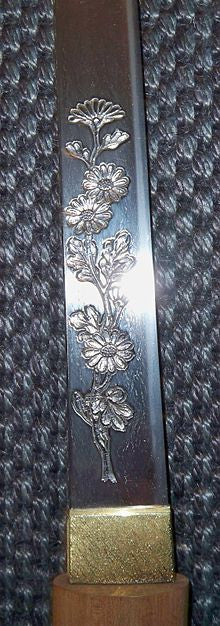Your Cart is Empty


Traditional Japanese swords like the katana and wakizashi are often made with subtle "decorations." The swordsmith adds these decorations after allowing the blade to cool and removing any remaining mud or clay. To learn more about decorations on traditional Japanese swords, keep reading.
File Markings
The most common type of decorations added to Japanese swords are file markings. Typically added to the tang after the blade has cooled, file markings are cut using a variety of different techniques. Some are made with horizontal lines, while others are made with slanted or checked lines. File markings consisting of a grid of diagonal lines across the tang is known as higaki, while file full dress file marks are known as kesho-yasuri.
Because it's added to the tang -- which is later covered by a tsuka or hilt -- file markings such as this are often concealed to the naked eye. Nonetheless, nearly all traditional Japanese swords have decorations added.
Nanako
Translated into "fish roe," nanako is a type of decorative file marking in traditional Japanese swords that's characterized by impressions made into the blade using a hollow punch. Nanako markings can be straight lines, diamonds, or other designs. According to some historians, nanako was used exclusively on court swords.
Ishime
The term " ishime" refers to any irregular decorative file marking that's not nanako, mokume or yasurime. Common examples of ishime include leather grain markings, pear markings, silk texture and tree bark.
Shaving vs Filing
While most decorations are created using file marks, some are made by shaving away the outer metal of the sword's blade. If the sword is too old, creating decorations with file markings may damage the blade, in which case shaving is performed.
Why Decorations are Added to Japanese Swords
Even though they are hidden (usually), nearly all Japanese swords feature decorations such as those mentioned above. The swordsmith waits for the blade to cool, scraps off any remaining mud, and adds the decorations by filing or shaving.
Aside from the symbolic nature of sword decorations, there's another reason why they are added: blade security. As mentioned above, most decorations are added to the tang, which is concealed by the hilt. By scraping or filing the tang, however, it creates an uneven surface that "grabs" the the hilt. Decorations aren't required to mount the tang on a hilt, but it certainly helps. The pressure secures and holds the tang to the hilt, preventing it from slipping out or moving.